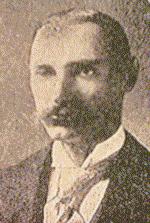

For many years it has been 'common knowledge' among Titanic researchers that Colonel John Jacob Astor lost his life when the Titanic's forward funnel crashed down on top of him as he struggled in the sea next to the sinking liner. This belief is based on the claim that Mr. Astor's body was badly crushed and impregnated with soot when it was recovered by the Mackay Bennett a few days after the disaster [e.g. see note #1.]
But is this claim accurate?
Despite a wide-ranging search for the original report that Mr. Astor's body was crushed and blackened by soot from a falling funnel, only one account has come to light which partially supports this contention. Page 31 of Archibald Gracie's "The Truth About the Titanic" contains the following statement:
The reader will immediately notice that, although the Gracie account claims that Col. Astor's body was indeed recovered in a crushed condition, there is no suggestion at all that the body was blackened by soot as if from a falling funnel. The present author believes that the 'extra' detail about the soot was just an imaginative addition to Gracie's account that was tacked onto it by researchers who felt a need to 'pin down' the exact cause of Colonel Astor's death.
Despite Archibald Gracie's claim that Colonel Astor's body was crushed, however, the present author has succeeded in uncovering several previously-unknown eyewitness accounts which cast serious doubt on the claim that Colonel Astor's body was badly damaged during the sinking of the Titanic.
Let us examine these accounts.
Although the above three accounts differ slightly in certain particulars, all three of them seem to confirm the fact that Colonel Astor's body was not crushed, soot-blackened or disfigured in a manner suggesting that he had been killed by either a falling boiler or a falling funnel. Quite the opposite, in fact.
The above three interviews make it very clear that Titanic researchers cannot afford to take 'common knowledge' for granted; these interviews prove that serious researchers must regard undocumented secondary sources with a great deal of caution and should instead rely on primary sources of information as often as they possibly can. If this cautionary advice is not acted upon, it is quite possible for well-meaning researchers to expend a great deal of time and energy discussing the fine points of historical events that never occurred in the first place.
1. Butler, Daniel, "Unsinkable: The Full Story of RMS Titanic," Stackpole Books, 1998. Page 136.
The author would like to express his grateful thanks to Mac Smith for drawing his attention to the Gracie account of Colonel Astor's crushed body.